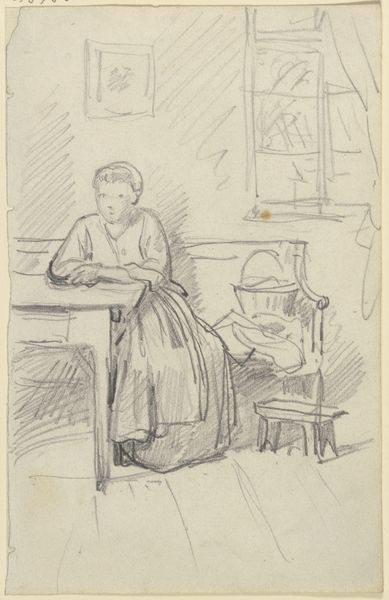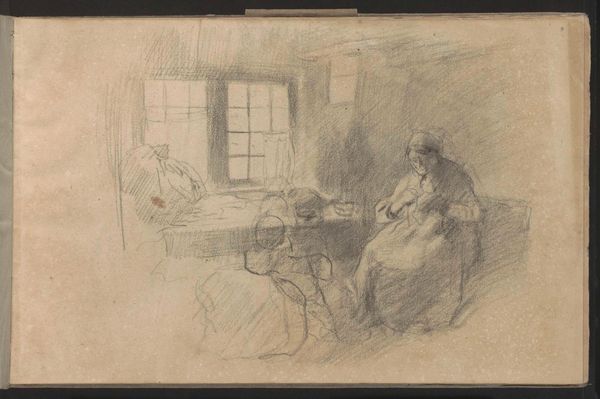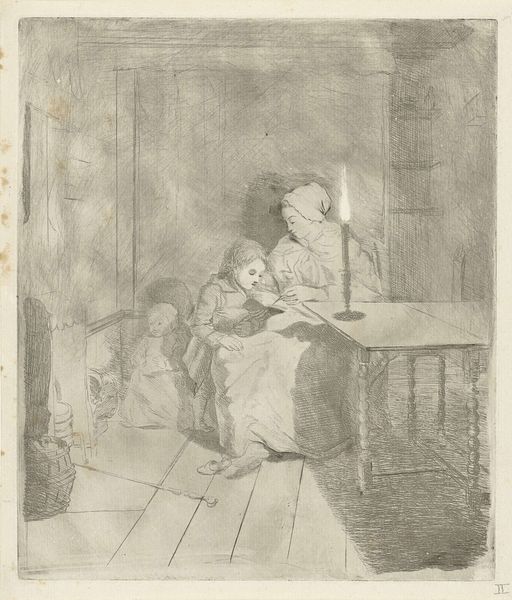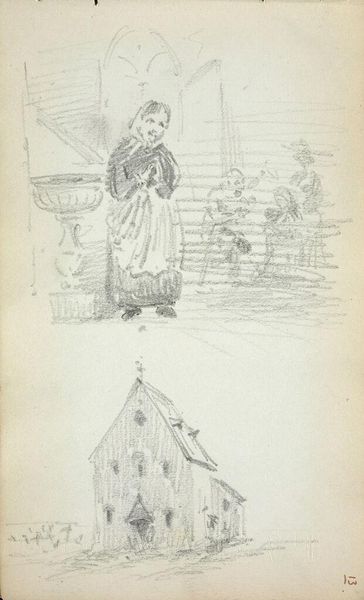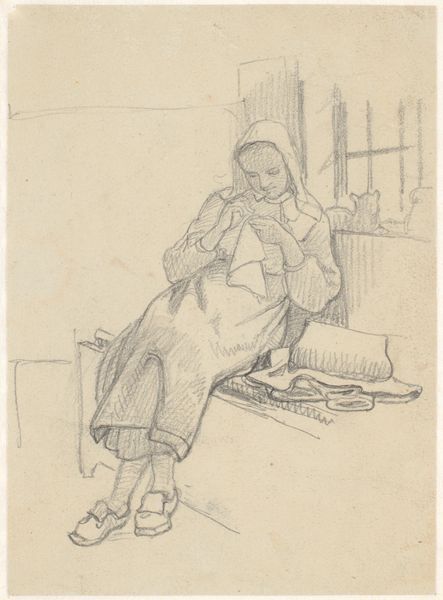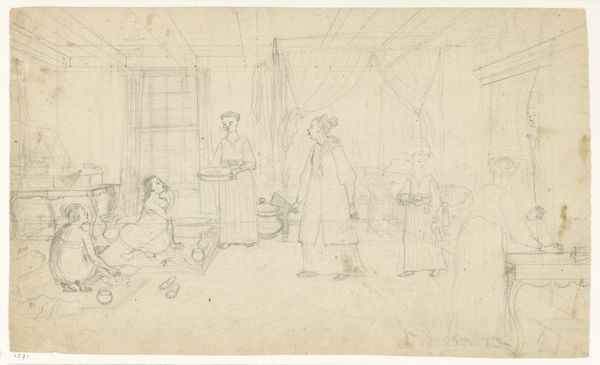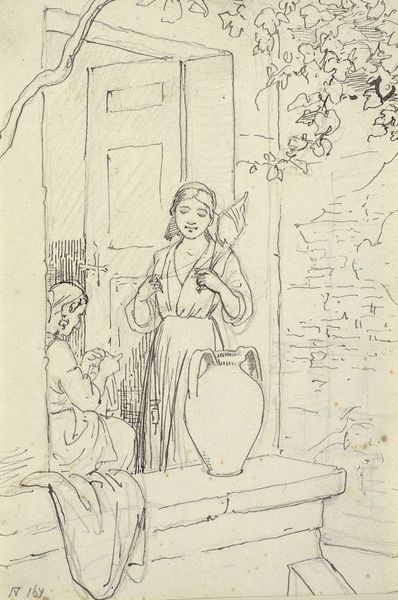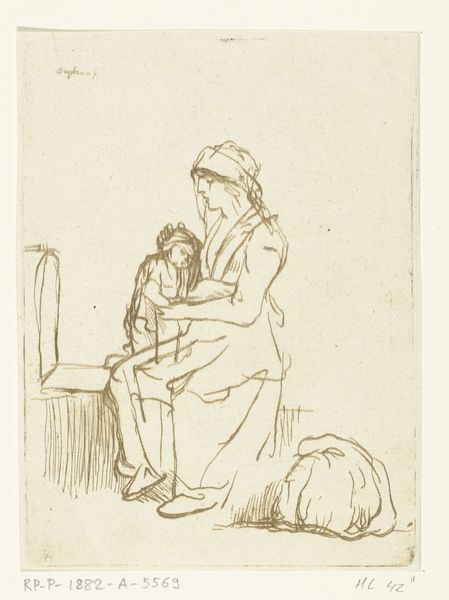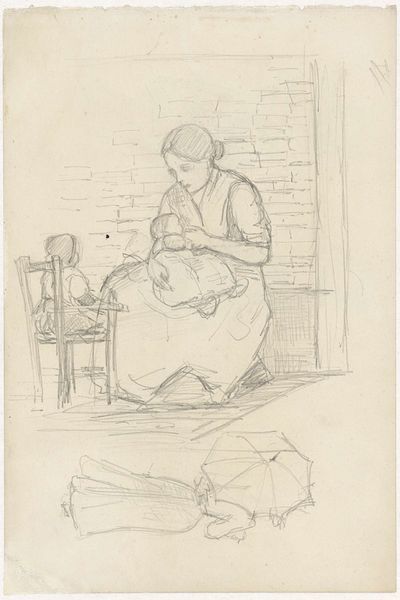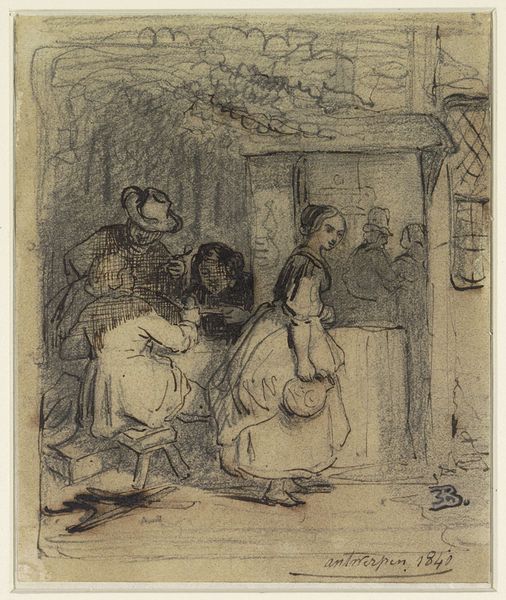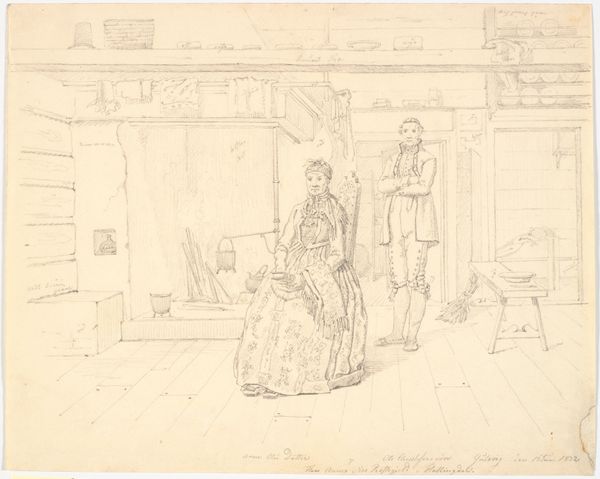
Zittende vrouw en twee kinderen voor de deur van een schuur 1834 - 1911
0:00
0:00
jozefisraels
Rijksmuseum
drawing, pencil
#
drawing
#
landscape
#
pencil
#
genre-painting
#
realism
Dimensions: height 305 mm, width 208 mm
Copyright: Rijks Museum: Open Domain
Curator: What strikes me first is the gentle weariness in this drawing—it feels like a captured breath. Editor: Indeed. What we have here is "Seated Woman and Two Children Before the Door of a Shed," a pencil drawing by Jozef Israëls. Israëls, a prominent figure in the Hague School, worked on this piece sometime between 1834 and 1911. It's currently held in the Rijksmuseum's collection. Curator: "Weariness" is perhaps too harsh, but that woman's posture… that’s bone-deep, isn’t it? And the way Israëls captures the soft light—or lack of it, more like—adds to that sense of quiet fatigue. I am immediately wondering about the political climate of that moment. What's on your mind here? Editor: Well, Israëls was deeply involved with representing the lives of ordinary people. He was known to represent peasants and fishermen and their everyday realities in this spirit. Considering this in tandem with your comment about her posture: The act of simply *existing* in the societal structures Israëls knew so well—was probably, in itself, wearying. So, is Israëls subtly making a commentary on those systems that oppress individuals in their domestic lives? Curator: I think so, though subtle feels like the right word here. There's a restraint in it, a lack of melodrama, even though the subject itself invites grand, emotional statements. Israëls has given so much intention and presence here that I am left with questions for the characters represented—an offering to be present with her and this moment in all its potential banality and significance. Editor: Right. There's beauty to be found in the everyday struggle—the very conscious and specific reality of womanhood. He wasn't only rendering an image, he was revealing an identity, a life shaped by labor and familial duty in the broader sense. It is not simply an image of her at the doorway of the shed. Curator: And maybe that's what hits hardest—that unflinching, quiet gaze, holding space, claiming dignity. In a museum setting, divorced from its time and place, it’s a potent reminder of the value inherent in unseen lives. Editor: Absolutely. It pushes us to ask: Whose stories do we choose to tell, and whose do we ignore? It makes you wonder: in 100 years from now, what will be chosen to represent *our* societies today? Curator: Well, thinking about our conversation as we move forward here in the Rijksmuseum: Hopefully there'll be something here, a single object perhaps that opens hearts to the profound grace that exists, often unobserved, in the heart of life itself.
Comments
No comments
Be the first to comment and join the conversation on the ultimate creative platform.
